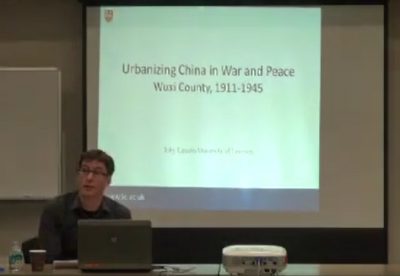In the first half of the twentieth century, the city of Wuxi, one hundred kilometers to the West of Shanghai, was
transformed from a small trading center into the largest industrial city in China outside treaty ports. This paper
describes how commercial elites and Republican officials shaped the rural and urban built environment and
argues that by 1937 urbanization had affected the lives of everyone living in the Lower Yangtze Delta. Despite
the destruction of the Japanese invasion in 1937, Wuxi City and the surro
unding countryside recovered. In telling this story, I investigate the limits of the Japanese occupation and argue that to truly understand the
history of urbanization in China it must be considered in the context of both war and peace.
Toby Lincoln is lecturer in Modern Chinese Urban History at the Centre for Urban History at the University of
Leicester. After graduating from the University of Oxford with a D.Phil in 2009, he spent a year as a
postdoctoral associate at the Council on East Asian Studies, Yale University. His first book project focuses on the
urbanization of the Lower Yangtze delta region in the first half of the twentieth century. Other work addresses
the relationship between urban development and war, and the history of urban planning in China. His most
recently published article was “From Riots to Relief: Rice, Local Government and Charities in Occupied Central
China.” in Food and War in Mid-Twentieth-Century East Asia, edited by Katarzyna J. Cwiertka, Ashgate, 2013,11-28.
プログラムの詳細はこちらのチラシチラシをご覧ください。
